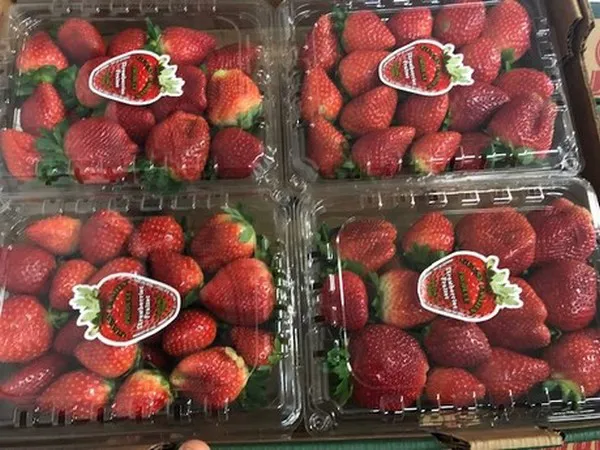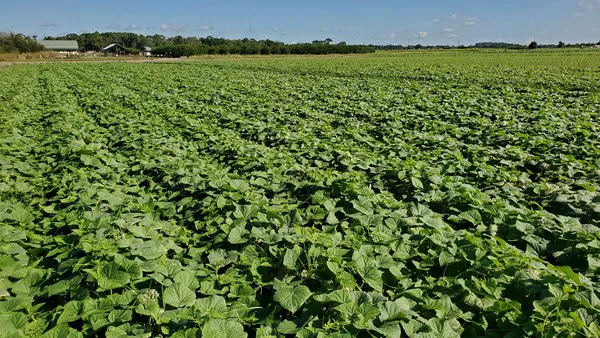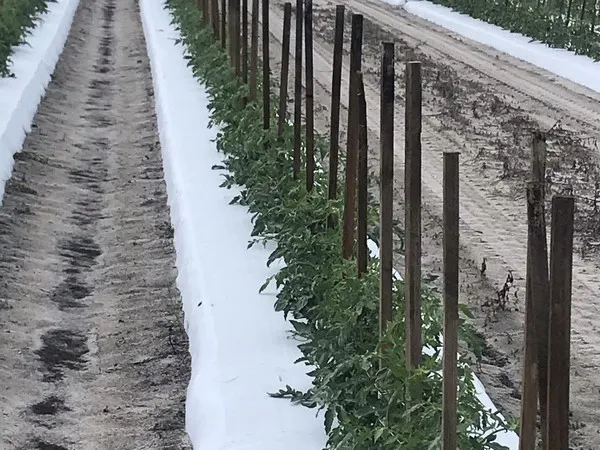Following a difficult spring for many Florida growers, fall crops are getting underway and growers feel fairly optimistic. “Everything is on track and looks good,” says Stephen S. Madonia Sr. with Chapman Fruit Company Inc. in Immokalee, FL.
This follows the spring growing season in which growers had to contend with the pandemic hitting North America. The event caused state and province-wide lockdowns mid-March onwards and subsequently, foodservice demand dropped significantly. “We lost some crops in the spring—we just didn’t pick them because there were no sales for them,” says Gary of Guynn Family Produce Sales Inc. in Lakeland, FL. The company starts production October 25th with specialty peppers, squash and eggplant.
 Guynn Family Produce Sales Inc. strawberries.
Guynn Family Produce Sales Inc. strawberries.
The foodservice effect
The lack of foodservice at the time hit in other ways too says Hank Scott of Long & Scott Farms in Mount Dora, FL, who handles pickle cucumber crops. “As the pickle market goes, they do pickles for retail and foodservice. Foodservice obviously died but even the retail people, they wanted to put pickles out but couldn’t get help between unemployment keeping people at home and people being scared of getting infected,” says Scott. “They normally run a three-shift day, they couldn’t even get enough people to run one shift. That stopped them from buying. All of that left a lot of good produce in the field.”
So where does that leave fall now in terms of acreage? “We’re going to stay consistent with our acreage because, in part, the governor opened up Florida 100 percent of the restaurants, etc.,” says Madonia Sr. Scott says the same thing adding that not only are farmers optimistic, but given the openings the U.S. is seeing, if foodservice demand does get better, the time to plant will have passed.
That said, Guynn sees a little drop in acreage. “My farms didn’t pull back but some growers have a little less in vegetables and strawberries,” he says. “Some smaller farms that would do 10-12 acres of other crops just stuck to their main crop. Overall, there’s less acreage in central Florida.”
 Pickle cucumber field from Long & Scott Farms.
Pickle cucumber field from Long & Scott Farms.
Concerns about rain
Heading into the fall season, Scott notes that summer was challenging from a weather perspective. “It hasn’t rained much in the last 10 days or so. But before that it was a solid 2-2.5 months of rain,” he says. “For the most part, it was drizzle but it was overcast all day.” The lack of sunlight of course made it difficult to grow crops such as corn. “The pickled cucumbers are pretty good considering all of the rain. There’s some shortness in them but it’s not bad,” says Scott. “The yields aren’t what we’d like to have but we do have a crop and the market is very good as well.”
While agreeably retail sales have been strong and offer Florida growers hope, there’s also hope in Florida around foodservice demand. “We need stuff to open up such as cruise lines. Florida is open and that’s good,” says Scott. “But the Northeast is hurting us because we do a lot of business there and they’re still shut down in a big way.”
 Photo: Chapman Fruit Company
Photo: Chapman Fruit Company
Also offering hope to growers is the USDA Farmers to Families Food Box program. “The off-grades are the challenge sometimes,” says Madonia Sr. “When you have items that would normally go to a restaurant—like a select cucumber—you have to manage that. But we’re getting a lot of orders for those sizes of fruits and vegetables for food boxes.”
As for fall pricing, in a year that’s been difficult to predict, pricing may still be tough to envisage. “We’re hoping because of less acreage, we can keep the price profitable,” says Guynn, who adds that imports at this time aren’t what Florida growers need to see. “As long as we have everything coming in from the south in Mexico, that hurts. We don’t need to bring in all the imports because we don’t have enough sales for our own product.”
Again, pricing though may be unexpected. “In the spring, our eggplant crop ended up being the highest price I’d ever averaged. Squash wasn’t good but eggplant was $20,” says Guynn. “We’ve sold eggplant for many years and I’ve never seen that. It was really a surprise because that happened in May and June.”
For more information:
Stephen S. Madonia Sr.
Chapman Fruit Company Inc.
Tel: +1 (239) 657-3151
[email protected]
Gary Guynn
Guynn Family Produce Sales Inc.
Tel: +1 (863) 701-2351
[email protected]
Hank Scott
Long & Scott Farms
Tel: +1 (352) 383-6900
[email protected]
www.longandscottfarms.com
